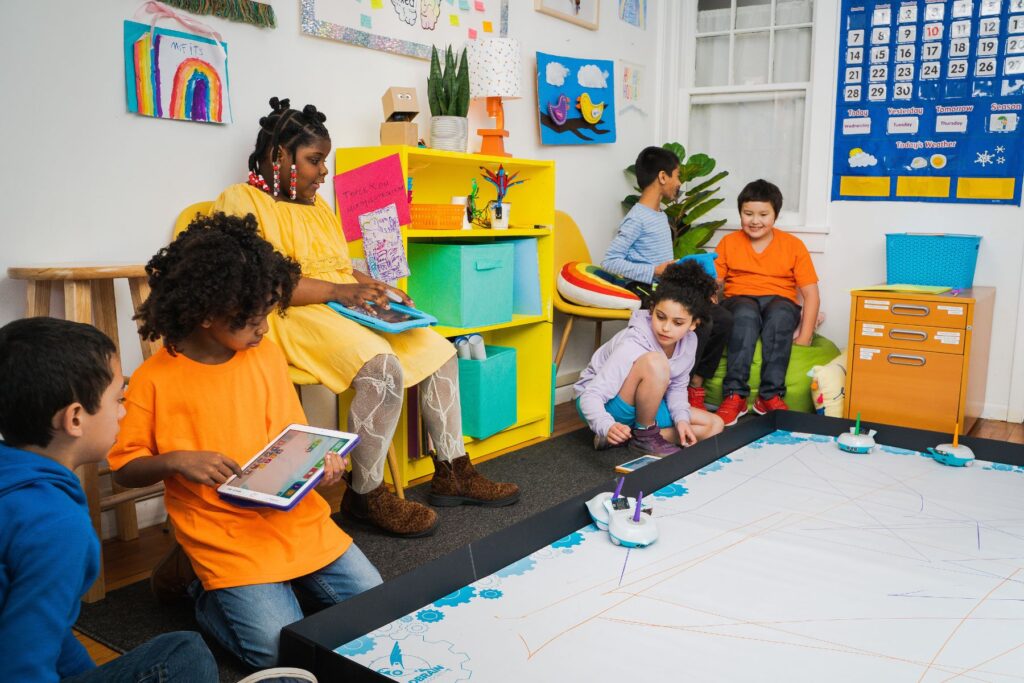Pioneering shows like Sesame Street have been encouraging young learners to follow their narratives across various media platforms for decades, but researchers of late have been specifically investigating the application of “transmedia” to education, in both formal and informal settings.
It’s a buzzword for sure. But media scholar Henry Jenkins has defined it as storytelling across multiple forms of media, “with each platform making a unique and original contribution to the experience as a whole,” he writes in a recent blog post. Kids can interact with their favorite Sesame Street characters in the TV series, books, and online games, for example. Jenkins argues that a good transmedia narrative uses these different media to “flesh out the world, to extend the time line, to deepen our familiarity with the characters, and to increase our engagement.” He says this encourages a new kind of learning.
With an educational property like Sesame Street, transmedia does something else – it reinforces the learning both by encouraging us to reread and re-experience a particularly pleasurable narrative (something, as we all know, kids are often inclined to do with little or no adult encouragement) and because they are invited to connect together pieces of information across multiple installments. In his book, The Tipping Point, Malcolm Gladwell (2000) describes the original Sesame Street as “sticky,” suggesting that young people become so drawn to its vivid characters that they keep coming back for more and in the process, these repeated encounters reinforce what they learn from its curricular design.
Last month, researchers at the USC Annenberg Innovation Lab and and the Joan Ganz Cooney Center released T is for Transmedia: Learning through Transmedia Play, a guidebook to understanding the role of transmedia in the lives of elementary school children. The report helps to identify the relationship between transmedia and storytelling, play, and learning, and provides case studies of meaningful transmedia play experiences as examples.
“We really have two goals for the report,” said co-author Rebecca Herr-Stephenson. “Our first is to get educators thinking about how they might incorporate transmedia play into activities, lesson plans, or projects. Our second goal is to put the design recommendations before media makers in the hopes that the principles will reinforce the good work people are already doing as well as encourage others to bring play and learning to the forefront of their transmedia projects.”
The authors, including Herr-Stephenson and her fellow researcher Meryl Alper, say that transmedia experiences, such as following the digital novel “Inanimate Alice,” are integral because they help students dig deeply into narratives that interest them, and encourage media engagement as well as visual and oral literacy.
“All of these are ways for kids to participate in and create culture,” Erin Reilly, Creative Director of the USC Annenberg Innovation Lab, said in a short video produced by the lab. “They don’t see a separation between online or offline. They see that technology—this medium right here—is a representation of how they can actually share their voice in the culture.”
Helping participate in new media culture as creators is just one of the many capabilities of transmedia, especially when the concept is woven into a diverse curriculum. Game designers and developers have a special opportunity to produce more “transformative” games that often help encourage personal growth and development.
Along with others in our region, Schell Games has been championing the production of transformative games and recently took their commitment to the next level. They’ve joined the Fred Rogers Company and PBS to create the interactive website Daniel Tiger’s Neighborhood, the online supplement to the new animated series based on the legacy of Fred Rogers.
The new online Neighborhood includes free, interactive games for kids featuring the “next generation” of the beloved characters from the original Mister Rogers television program. The cast of characters, led by a young Daniel Tiger, use imagination, creativity, and music to explore social-emotional themes. The show and the interactive games on its website, mobile, and tablets are designed to teach key social skills to preschoolers ages 2 to 4.
The concept may seem simple, but the implementation of transmedia is crucial for today’s students to develop along with a comprehensive understanding of 21st-century tools. More importantly, it helps erase the boundaries between learning and play in the most exciting ways—by engaging children in interactive media they love and can learn from.
